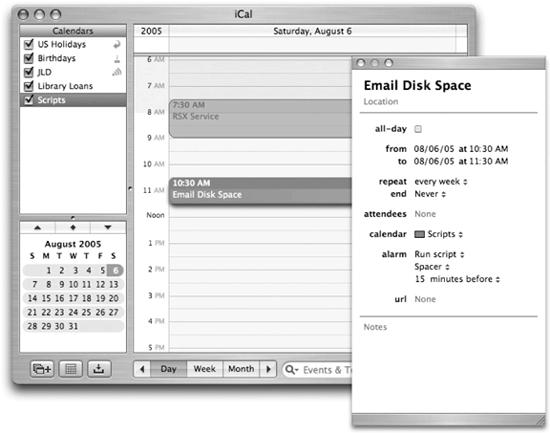cron
The primary tool for scheduling tasks on the command line is the venerable cron. This tool is started automatically by launchd (as required) and runs continuously in the background. When loaded, cron wakes up every minute to consult a set of tables to see if there is anything to be executed at that time. If so, it takes care of executing it. These tables, known as crontab files, are located in two places on the filesystem:
-
/etc/crontab The
crontabfile for the system at large. Each entry in this table represents a command that will be run by therootuser and the time that it will be run. Anybody can read this file, but only therootuser can edit it. Starting in Tiger, most of the tasks that were once launched bycronhave made their way tolaunchd. Thus,crontabis somewhat deprecated from Apple’s standpoint, but it’s still there if you want it.
Figure 13-2. Setting a repeating event in iCal to execute a script
-
/var/cron/tabs/ This directory contains the user
crontabfiles for each user on the system who is usingcron. These files are hidden and are visible only to therootuser, so that other users on the system can’t look at each other’scrontabfiles.
The launchd
daemon loads cron only if a crontab is set up on the system. In a default Tiger install, this means cron is not running at all. However, once you install a crontab for your user or make changes to the system crontab ...
Get Running Mac OS X Tiger now with the O’Reilly learning platform.
O’Reilly members experience books, live events, courses curated by job role, and more from O’Reilly and nearly 200 top publishers.

